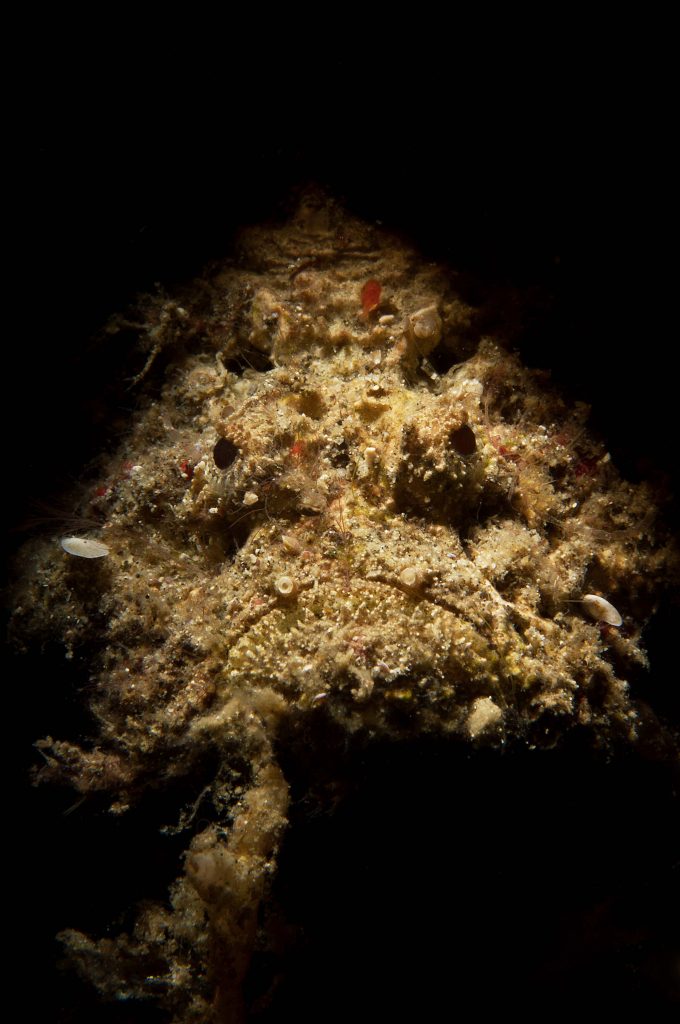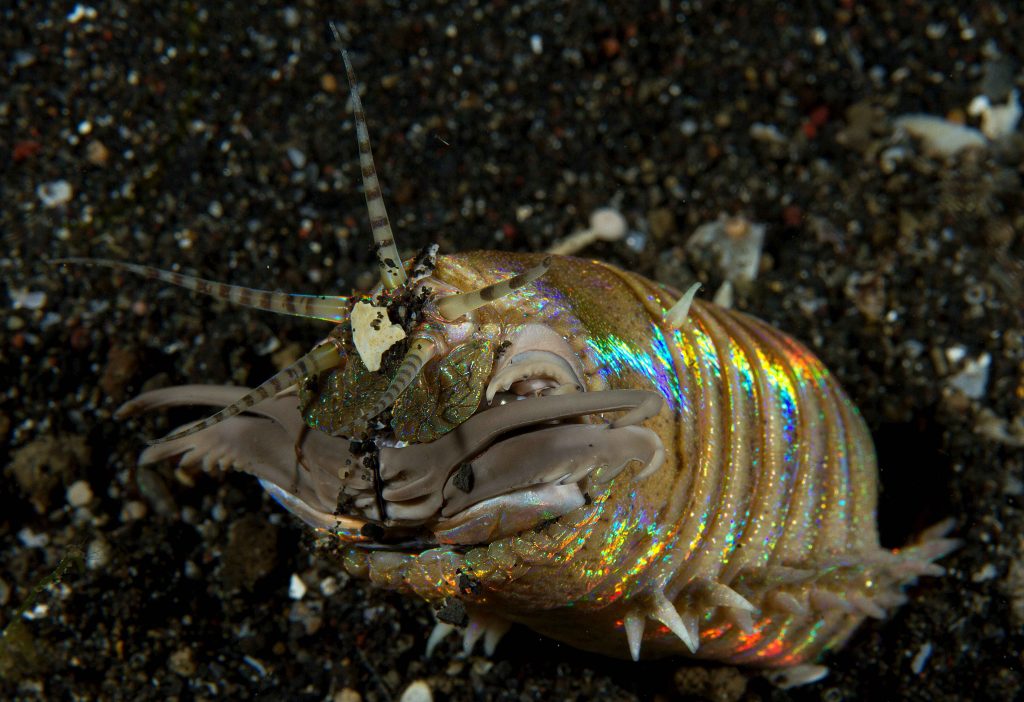A Cryptic October
October was an intriguing month for new marine creatures found around D’Arros and St Joseph. Three new species were added to the species list at SOSF-DRC, all of them cryptic by nature.
While changing receivers in St Joseph Atoll, SOSF-DRC Research Assistant Luke Gordon spotted three tiny bumble bee shrimp (Gnathophyllum americanum) using the receiver housing as a home. Growing to only 25 mm long and sporting a striped bumble style jacket makes these charismatic shrimp a favorite amongst macro photographers worldwide.
The early morning dives as part of the humphead wrasse tagging over October opened up a window where various nocturnal critters could be spotted during the twilight hours. The tagging team spotted a reef stonefish early one morning perfectly disguised as a rock on the reef crest. These fish secrete potent neurotoxins from the base of their dorsal spines, which, when stepped on, inflict a painful sting. These fish are masters of mimicry and use aggressive mimicry whereby the well-suited rock-like camouflage is an aid for the predation of other species.

A well camouflaged stonefish looks out from the reef. This is the first record of a stonefish by SOSF-D’Arros Research Centre. Photo by Luke Gordon | © Save Our Seas Foundation
The third new species is a possible undescribed species of eunice worm (Eunice sp.), a cousin to the famous Bobbit worm of Indonesia and Southeast Asia. This predatory worm can, on the extreme end, grow up to 3 m long and lurks in both crevices of the reef as well as deep beneath the sand. By raising just its head and jaws out of its burrow, this worm waits patiently for an unsuspecting victim to swim by, before a large set of jaws extend and capture the prey item. The Eunice worm sighted was just under 1 m but intimidating nonetheless.

The Bobbit worm is a close relative to the Eunice species of worm found on an early morning dive in October.
